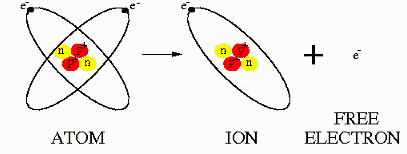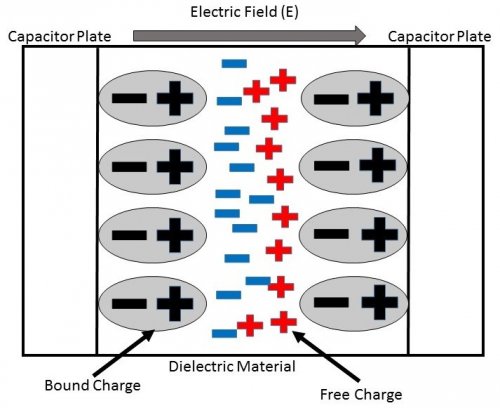Free and bound electric charges, conduction and displacement currents
The particles that make up any substance have electrical charges… The electron has a negative charge e = 0.16 * 10-18 k, and the proton has the same positive charge. The total charge of an atom, molecule or body consisting of many molecules can be positive, negative or equal to zero, depending on the ratio between the total positive and negative charge of their constituent elementary particles.
Depending on the ability to move in an electric field, charges can be divided into two large groups. The charges of the first group are characterized by the possibility of unlimited movement in an electric field, and therefore they are called free fees… The second group of charges does not have this possibility, their movement is limited by the structure of an atom, molecule, crystal or by the heterogeneity of the structure of matter. These charges are called bound.

The separation of free and bound charges does not always depend only on the physical nature of the particles under consideration.Charges that are free in a homogeneous medium can be connected in the formation of compositions consisting of different materials.
Free electrons and ions of the substance under the action of an electric field move from one electrode to another, forming conduction current.
Connected electric charges under the action of an electric field have the ability to mix only within certain, often very limited limits. This process of movement, the so-called polarization, is characterized by a polarization vector and essentially depends on the physical connections between the charges. In polarization, charges are displaced under the action of an electric field and appear deflection current.
The dielectric contains an equal number of positive and negative interconnected charges, and the effect of an external electric field affects the mutual displacement of the centers of positive and negative charges, and in the appearance of electric moments of pairs of opposite charges — dipole moments. In a uniform field, the polarization vector is the average value of the total dipole moment per unit volume. The polarization of the dielectric depends on the strength of the electric field.
Materials in which only conduction currents matter and displacement currents can be neglected are called drivers… Materials in which conduction currents are negligible and can be neglected are called insulators… Materials in which polarization is of great importance are called dielectrics (see — Metals and Dielectrics - What's the Difference?). Those materials in which it is necessary to consider both conduction currents and displacement currents are classified as semiconductors.
The phenomenon of polarization of dielectrics and the appearance of a bias current in industry is used for high-frequency heating of dielectrics (for example, drying wood, cardboard, heating in the food industry) and semiconductors.

The material to be heated is placed between the plates of the capacitor to which a high frequency voltage is applied. Conduction and displacement currents occurring in a material placed in a high-frequency electric field cause heat to be generated in the material and its heating. This type of heating is called dielectric heating.
The process of drying wet materials, i.e. removal of moisture from them, can occur due to two phenomena: direct evaporation of moisture inside the material and its release in the form of vapor, and the movement of moisture in the liquid phase from the internal areas to the surface. The presence of an electric field in the material significantly affects the evaporation and movement of moisture, which makes it possible to significantly enhance the drying process.

